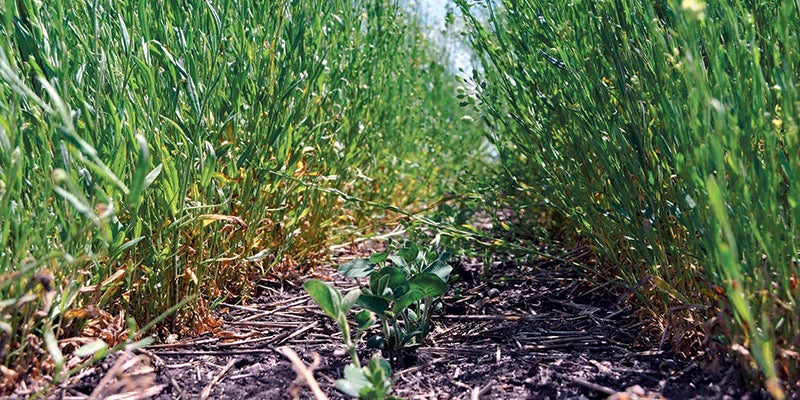Minnesota begins to explore climate solutions in corn, soybean farming
Published 1:01 pm Saturday, October 19, 2019

- Soybeans grow between rows of winter camelina at a USDA research plot near Morris, Minn., in 2016. A new analysis shows a range of agricultural practices, including planting cover crops like camelina, can reduce greenhouse gas emissions — and help improve water quality at the same time.Courtesy of Russ Gesch | USDA ARS
By Elizabeth Dunbar
Growing corn, soybeans and other crops contributes significantly to Minnesota’s overall emissions of heat-trapping greenhouse gases associated with climate change, but a new analysis shows a range of practices can reduce those emissions — and help improve water quality at the same time.
“Many farmers are already engaging in these practices for other reasons,” said Peter Ciborowski, an environmental research scientist at the Minnesota Pollution Control Agency and the author of a new report exploring the impact of various agricultural practices on greenhouse gas emissions.
“The first step is to understand what are the present-day consequences of these voluntary, good-citizen measures and to take the next step,” he said.
In his report, Ciborowski report made a preliminary estimate of what’s possible.
First, he took recommendations under the state’s existing nutrient reduction strategy — a plan for reducing runoff into the Mississippi River, Lake Winnipeg and Lake Superior. The strategy calls for a variety of farming practices that also happen to reduce greenhouse gas emissions associated with growing crops: planting grass buffers along waterways; planting cover crops that grow alongside cash crops; reducing tillage; taking land out of production for conservation; and several others.
Then, using research that shows the emissions reductions associated with each practice, Ciborowski calculated that overall agriculture emissions in the state could be reduced by 5 to 10 percent if the state follows through with its nutrient reduction strategy.
The three largest emissions sources from growing crops are applying fertilizer, tilling the soil and using tractors and other farm machinery, according to the report. Officials say the latest analysis looked only at emissions from crops, but future studies could include livestock.
“What this report is showing is that [these best practices] are out there, and they come in combination with other benefits to the state for the water quality, for the soil health,” said Frank Kohlasch, who manages the MPCA’s air assessment section.
“How can we maximize the benefits for everyone involved, including the economics for the farmer?”
Agriculture is one of the state’s top sources of emissions, along with electricity and transportation. State lawmakers in 2007 set goals to reduce overall greenhouse gas emissions 30 percent by 2025 and 80 percent by 2050. But we’re not on track to meet them.



